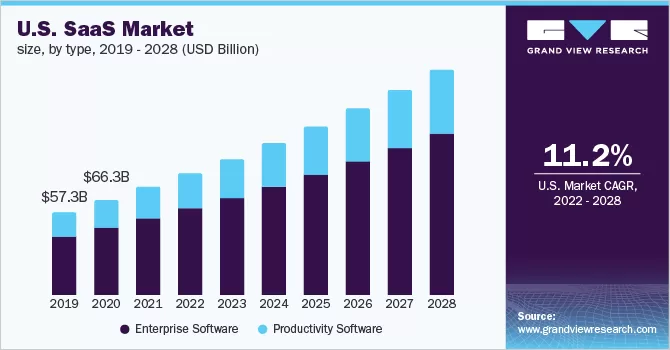SaaS and subscription models for ecommerce marketing. Two current trends in software go hand in hand but aren’t the same: software-as-a-service (SaaS) and subscription. SaaS refers to how the software is deployed and delivered to the end customer, while subscription refers to how that software is monetised. All too often, however, these two concepts are lumped together. Let’s take a look at how they differ and how they can complement one another.
SaaS Is an ecommerce marketing deployment model
How software is deployed or delivered to the customer is called the deployment model. In the SaaS deployment model, the software supplier chooses to host the software or a major component of the application and provide it as a service to the end customer. The entire burden of running the service – including hosting, maintenance, and updates – is with the supplier; this includes all costs related to hosting and management, increasing the expenses for the supplier. Because of the ongoing costs associated with SaaS, it requires a recurring revenue model.
SaaS is not the same as cloud deployment, though this is another area where terms are often used synonymously – in error. A cloud solution means that the software runs in the cloud, as opposed to in a local data centre. Cloud solutions may be managed by the end customer. Other common deployment models include on-premises (where applications are installed locally, often for reasons such as the need for air-gapped environments or requirements for computing power that may make certain workloads not ideally suited to deployment in the cloud) and embedded (where software is installed in hardware or devices).
SaaS is the most rapidly growing deployment model. In a recent report, 59% of respondents indicated that SaaS would grow as a percentage of overall license revenue in the coming 12 to 18 months. As found in IDC’s Worldwide Software Business Model (Subscription and License) Forecast, 2021–2025, the subscription business model will continue to grow rapidly in the coming years, with a compound annual growth rate (CAGR) “of 17.9% for 2020–2025,” representing “83% of total software revenue by 2025.”
Subscription is a monetisation model
Monetization models are economic models that describe how customers pay for software. A subscription monetization model is tied to the duration of the contract and is usually paid in annual instalments. Subscription (also sometimes referred to as term licensing) is a recurring revenue model that results in a steady recurring revenue stream. The stability of subscription monetization depends on the subscription terms and customer success and retention.
Subscription lends itself well to the SaaS deployment model because the supplier needs a recurring revenue model to maintain the service. Subscription is also applicable to and increasingly popular for other deployment models, particularly for on-premises deployment.
Other monetisation models that deliver recurring revenue include outcome-based models (in which customers pay based on measurable value), and usage-based models (in which customers pay based on actual use of software). In contrast, non-recurring or one-time monetisation is also possible through the perpetual (a.k.a. perp) monetisation model. In the perpetual model, buyers pay once for unlimited use of a supplier’s software. This requires a large up-front investment by the buyer, also making it much less valuable to the software company selling it.
Subscription monetisation provides multiple benefits for suppliers and buyers, leading to the strong trend away from perpetual monetisation, toward subscription. This trend is true both for on-premises and SaaS deployments.
- Subscriptions benefit software suppliers by growing recurring revenue. Recurring revenue is valued higher than one-time revenue and is a top goal of many chief financial officers (CFOs). Subscription can help lower the entrance barrier for prospective customers, provide financial stability and resilience, deliver predictable revenues that can fuel ongoing product investment, and ultimately strengthen the company’s valuation.
- Subscriptions benefit software buyers by reducing upfront investments in rapidly changing technology, delivering flexibility, and shifting expenses from CapEx to OpEx. Because subscriptions can change as needs change, the result is less risk than with perpetual licenses. A buyer can tune their spending to their usage needs.

Adopting SaaS and Subscription
The SaaS deployment model and the subscription monetisation model may certainly be used together with great results. Adopting these models – individually or in combination, as is increasingly the case – requires clear understanding and analysis of their differences, the needs they meet, and the benefits they deliver for your business initiatives and financial goals.





